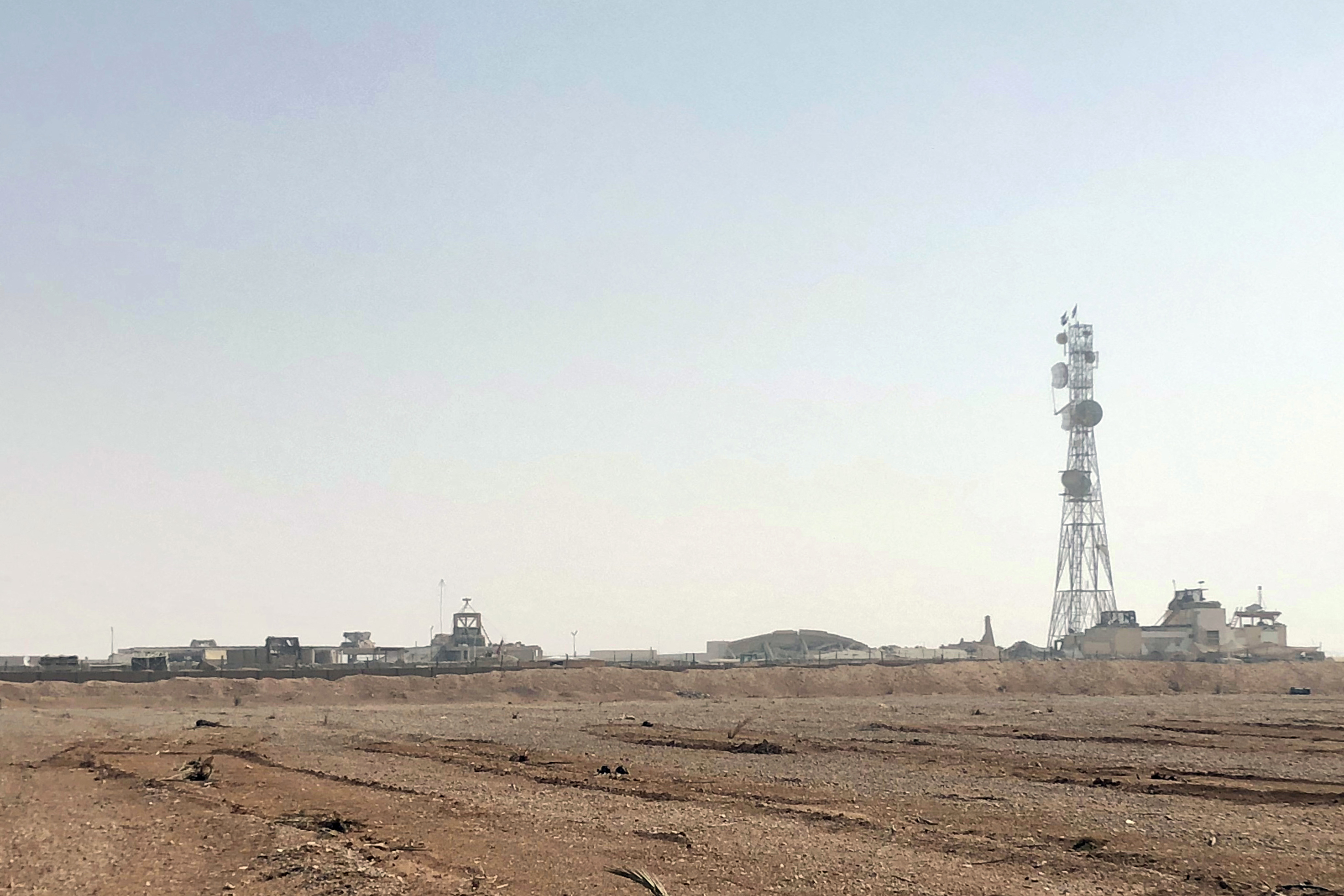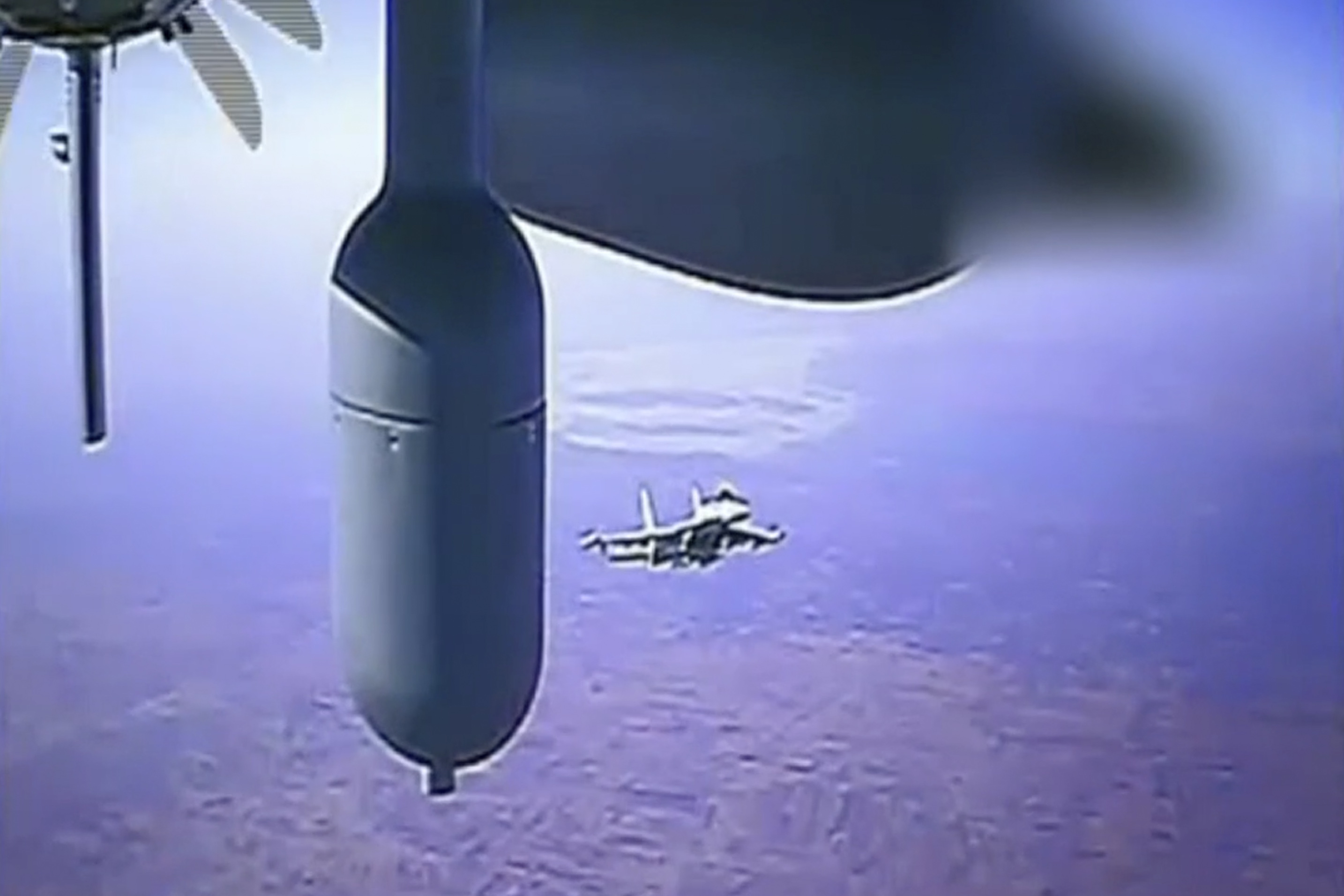The U.S. military launched airstrikes early Friday on two locations in eastern Syria linked to Iran's Revolutionary Guard Corps, the Pentagon said, in retaliation for a slew of drone and missile attacks against U.S. bases and personnel in the region that began early last week.
The U.S. strikes reflect the Biden administration's determination to maintain a delicate balance. The U.S. wants to hit Iranian-backed groups suspected of targeting the U.S. as strongly as possible to deter future aggression, possibly fueled by Israel's war against Hamas, while also working to avoid inflaming the region and provoking a wider conflict.
According to a senior U.S. military official, the precision strikes were carried out near Boukamal by two F-16 fighter jets, and they struck weapons and ammunition storage areas that were connected to the IRGC. The official said there had been Iranian-aligned militia and IRGC personnel on the base and no civilians, but the U.S. does not have any information yet on casualties or an assessment of damage. The official would not say how many munitions were launched by the F-16s.
A senior defense official said the sites were chosen because the IRGC stores the types of munitions there that were used in the strikes against U.S. bases and troops. The two officials briefed reporters after the strikes on condition of anonymity to provide details on the mission that had not yet been made public.
We've got the news you need to know to start your day. Sign up for the First & 4Most morning newsletter — delivered to your inbox daily. Sign up here.
According to the Pentagon, there have now been at least 19 attacks on U.S. bases and personnel in Iraq and Syria since Oct. 17, including three new ones Thursday. Air Force Brig. Gen. Pat Ryder said 21 U.S. personnel were injured in two of those assaults that used drones to target al-Asad Airbase in Iraq and al-Tanf Garrison in Syria.
In a statement, Defense Secretary Lloyd Austin said the “precision self-defense strikes are a response to a series of ongoing and mostly unsuccessful attacks against U.S. personnel in Iraq and Syria by Iranian-backed militia groups that began on October 17.”
He said President Joe Biden directed the narrowly tailored strikes “to make clear that the United States will not tolerate such attacks and will defend itself, its personnel, and its interests.” And he added that the operation was separate and distinct from Israel's war against Hamasa.
The senior defense official told reporters that the F-16 airstrikes will have a significant impact on the ability of Iranian proxy groups to continue to attack U.S. forces. Asked what groups were targeted, the official said there are several that can have different names, but the U.S. holds Tehran responsible for funding, arming, equipping and directing the proxies. The official said the airstrikes were not designed to expand the conflict in the region, but to compel Iran to direct the militia groups to cease the attacks on American bases and personnel.
The Biden administration has not accused Iran of having a direct role in the Oct. 7 Hamas attack on Israel and has said it appears so far that Tehran was not aware of it beforehand. But the U.S. has noted that Iran has long supported Hamas and has raised concerns that Iran and its proxies could turn the conflict into a wider war.
Austin said the U.S. does not seek a broader conflict, but if Iranian proxy groups continue, the U.S. won’t hesitate to take additional action to protect its forces.
According to the Pentagon, all the U.S. personnel hurt in the militant attacks received minor injuries and all returned to duty. In addition, a contractor suffered a cardiac arrest and died while seeking shelter from a possible drone attack.
The retaliatory strikes came as no surprise. Officials at the Pentagon and the White House have made it clear for the past week that the U.S. would respond, with Ryder saying again Thursday that it would be “at the time and place of our choosing.”
“I think we’ve been crystal clear that we maintain the inherent right of defending our troops and we will take all necessary measures to protect our forces and our interests overseas,” he told reporters during a Pentagon briefing earlier in the day.
The latest spate of strikes by the Iranian-linked groups came in the wake of a deadly explosion at a Gaza hospital, triggering protests in a number of Muslim nations. The Israeli military has relentlessly attacked Gaza in retaliation for the devastating Hamas rampage in southern Israel nearly three weeks ago, but Israel has denied responsibility for the al-Ahli hospital blast and the U.S. has said its intelligence assessment found that Tel Aviv was not to blame.
The U.S., including the Pentagon, has repeatedly said any strike response by America would be directly tied to the attacks on the troops, and not connected to the war between Israel and Hamas. Such retaliation and strikes against Iranian targets in Syria after similar attacks on U.S. bases are routine.
In March, for example, the U.S. struck sites in Syria used by groups affiliated with Iran’s Revolutionary Guard after an Iranian-linked attack killed a U.S. contractor and wounded seven other Americans in northeast Syria. American F-15 fighter jets flying out of al-Udeid Air Base in Qatar struck several locations around Deir el-Zour.
U.S. officials have routinely stressed that the American response is designed to be proportional, and is aimed at deterring strikes against U.S. personnel who are focused on the fight against the Islamic State group.
U.S. officials have not publicly tied the recent string of attacks in Syria and Iraq to the violence in Gaza, but Iranian officials have openly criticized the U.S. for providing weapons to Israel that have been used to strike Gaza, resulting in civilian death.
The Pentagon, meanwhile, has beefed up air defenses in the region to protect U.S. forces. The U.S. has said it is sending several batteries of Patriot missile systems, a Terminal High Altitude Area Defense (THAAD) battery and additional fighter jets.
The THAAD is being sent from Fort Bliss, Texas, and the Patriot batteries are from Fort Liberty in North Carolina and Fort Sill in Oklahoma. An Avenger air defense system from Fort Liberty is also being sent.
Officials have said as much as two battalions of Patriots are being deployed. A battalion can include at least three Patriot batteries, which each have six to eight launchers.
Ryder said Thursday that about 900 troops have deployed or are in the process of going to the Middle East region, including those associated with the air defense systems.



